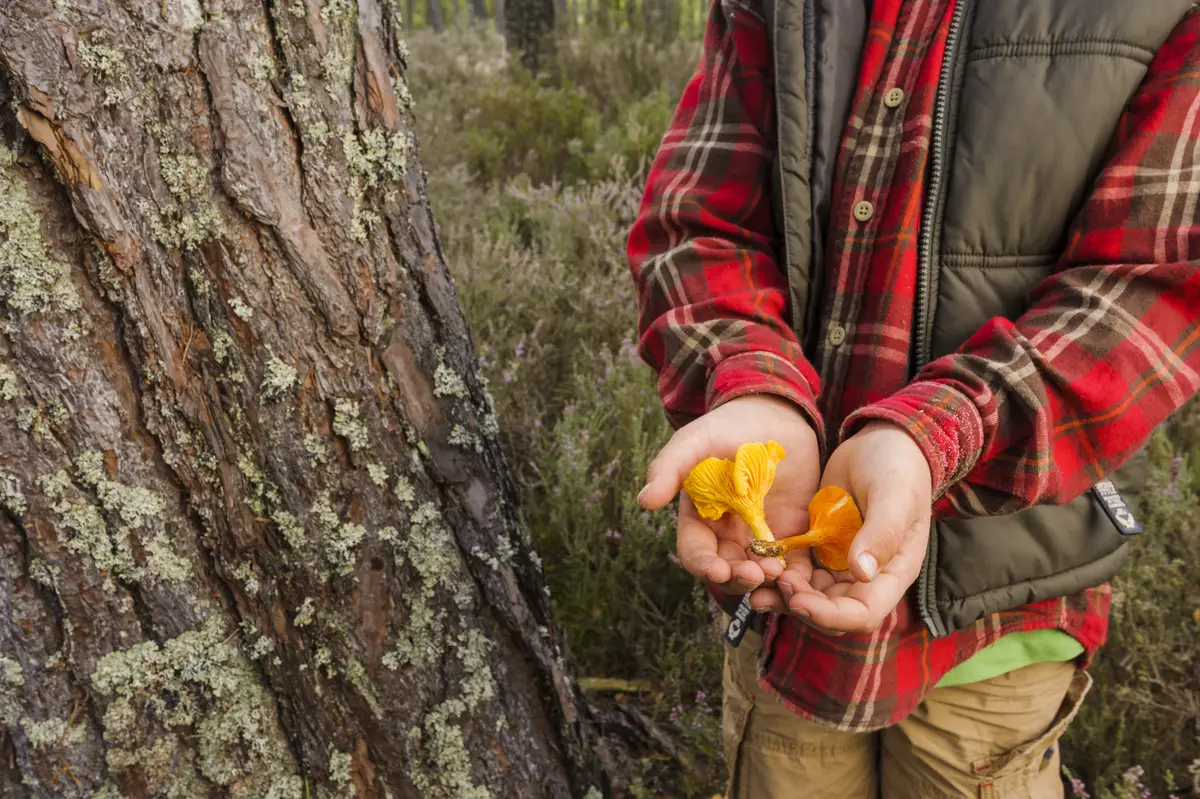Fantastic fungi: Foraging and sustainability

Foraging for mushrooms and other wild-growing ingredients is one of the most fun and rewarding activities you can get up to in Scotland's forests. Not only do you get to see and hear all the wonders of the wild woods... you get to taste them as well!
As our feature on foraging explains, there are some very important safety considerations to pay attention to when foraging for any wild foods, and mushrooms in particular. Some species are dangerously poisonous, and can even cause fatalities if eaten.
You need to make sure the information you are relying on to tell you which species to pick, and which to avoid, is reliable and up to date. You also need to be mindful to leave enough for everyone - including the wildlife who call the forest home. Some of the best advice on the web is found in the Scottish Wild Mushroom Code.
Animals eat mushrooms too!
Foraging for wild ingredients has become very popular in recent years, so this has become an increasingly important message to get across. Some of our forests, such as Devilla in the south of Scotland, can end up stripped bare. This means no food for the local animal population, and a more challenging hunt for other foragers.
Finding a balance
Wild food is vital for the survival of the UK’s wildlife, so it is incredibly important to forage sustainably. Birds, hedgehogs, insects and dozens of other species rely on this finite source of protein, and also help mushrooms and other plants to produce seeds and spores that grow into the next generation of tasty morsels. Like so many things in ecology and conservation, balance is absolutely key. If we all forage sustainably, the forests can produce more than enough for everyone to enjoy, human and animal alike.
Learn from the experts
One of the best ways to find out about foraging is to ask an experienced forager. Gartmore House in Aberfoyle runs courses in foraging, and both Monica Wilde and The Foragers offer workshops, expeditions and outings based around foraging skills, taking place throughout Scotland. Scottish Natural Heritage have a page dedicated to our native fungi, while the website Scottish Fungi contains absolutely everything you need to know about the mushrooms found in your nearest woods.
If you're interested in foraging, explore the links below, and follow our three simple rules:
1. Know your mushroom! Avoid dangerous species, and pick only what you can identify.
2. Only take what you can use - leave plenty for wildlife and other foragers.
3. Have fun!
Find out more about foraging:
For some more information about foraging in Scotland, and some guidelines to help you forage sustainably, check out The Scottish Wild Mushroom Code. Our feature on foraging has some links and tips about how to find mushrooms, wild garlic and other herbs and plants.